September, 1973 (50 years ago) marked the first televised broadcast of the 1968 box office hit Planet of the Apes. Probably not coincidentally that was also the year the last in the original five part series Battle for the Planet of the Apes was released to theatres. I can’t recall if I’d known about the films prior to that, but if not, I DEFINITELY became aware of them that year, when I was the ideal age of eight years old. I’ve referred to these movies many times on the blog, so this seemed a fitting time to give it a dedicated post. And, as it happens, it is also the 60th anniversary this year of the pub date of the original book on which the series was based.
La Planète des singes (1963) was the work of French author Pierre Boulle, then best known for writing The Bridge Over the River Kwai (1952), which had been filmed to great acclaim in 1957 by David Lean. The original Planet of the Apes novel differs from the films in many particulars, though they share in common the elements of: 1) a planet, 2) articulate apes, 3) inarticulate people, and 4) travel through time and space. And they also share, um, bad science? Or to put it more charitably, an allegorical premise that doesn’t withstand much logical probing. What do I mean by that? Well, even in the 1960s it was well known to most educated people that humans ARE apes. Since 2005, the concept suffered yet another blow when scientists mapped the human and chimpanzee genomes and learned that we share 98.8% of our genes. With gorillas, we share about 98%.
NOW. You may say, well, that’s gotta be one crucial 1 or 2% to make us that different! I would beg to differ on the subject of whether we’ve ever been that different. The tool of language makes us capable of intricate achievements, but we’re certainly no wiser or more peaceful, or more “moral” or whatever you want to tell yourself. In Boulle’s novel, language makes all the difference as well. The sticking point is the highly unlikely aspect of humanity’s having FORGOTTEN how to talk, which is preposterous. And there is all this grey area to consider. How many people do you know who know how to talk and even how to read and write, but really may just as well not possess those skills for all the good it does them? I’ve known hundreds personally, and am aware of millions of others from the media. This isn’t cynicism. It’s empirical observation.
So I guess my point is: ape, human, what’s the diff? Yes, there’s no ape Einstein. But I assure you that the Einsteins of this world are nearly as different from most other human beings as they are from apes. It’s a difference of degrees here, not of kind. And yes, we have differently shaped bodies, and humans (some humans) are domesticated, while apes have wilderness survival instincts. Dogs vs. wolves, basically.
The other aspect of the franchise that’s there for all to see is that it’s theoretically about race and class, slavery and colonialism. But I don’t know what we’re supposed to take away from it. “What if slave became ruler?” it asks, “and what if the formerly ascendent race became the beast of burden?” So what? Isn’t it already morally repugnant the way it is? Why do you need to flip it to SEE the lesson? I mean do you have to go so far as to imagine Europeans as slaves to Asians and Africans and Amerindians to know that slavery is evil? If so, God help you. And on top of all that, I’ll just come out and say that making APES the stand-ins for the formerly enslaved races is patently offensive, a detail few seem to notice. There are moments in the films that seem to CATER to the racist instincts of audiences rather than call them out.
But, like I say, I was eight at the time, the target market for such things as Planet of the Apes coloring books, action figures, lunch boxes, and Halloween costumes. Some people my age still are, in light of which, I take it back. Maybe apes ARE in line to inherit the earth.
Planet of the Apes (1968)
The original film was the pivot that transformed the middle-aged Charlton Heston from a star primarily associated with historical and Biblical epics to the hero of post-apocalyptic sci-fi and disaster pictures. He’s always been the stuff of high camp, never more so than in this picture, and lines like “Get yer stinking paws off me, you damned dirty ape!” nowadays threaten to swallow up his turns as Moses and Ben Hur. As the marooned astronaut Taylor, he is mighty unlikable somehow, and it’s kind of a drag to have to spend the entire movie in his cranky, shirtless presence. Furthermore, he’s not that bright, and the filmmakers seem to think we aren’t either. Even as a child I was like, “Okay, that’s OBVIOUSLY the Grand Canyon”.
The films also became the high water mark for Roddy McDowall, then normally a supporting actor, often in horror and exploitation fare. McDowall remained associated with the series until its last gun was fired. The irony is that he did so at the cost of being underneath a preposterous mask and costume (Oscar-winning and considered the last word at the time, though few seemed to notice or remark upon the fact that none of the ape characters resembled any known species of actual apes). Many great actors submitted to anonymity in order to participate in the series. Kim Hunter (the original Stella in A Streetcar Named Desire), Maurice Evans, James Daly, and James Whitmore are all in this one, uttering their muffled lines from deep inside ape suits. Their words were co-written by the Twilight Zone creator Rod Serling. The success of the movie no doubt helped propel him to his next TV success, Night Gallery. The twist at the end has been quoted and shown so frequently it has to rank with the shock scene in Psycho as one of the most spoiled moments in Hollywood cinema. But, hey, I won’t spoil it for you. Just in case YOU’VE been on another planet.
Beneath the Planet of the Apes (1970)
We forgot to mention Linda Harrison as the mute love interest “Luna” in the previous picture. At the top of this one she and Heston are still in the “Forbidden Zone” (the region outside “Ape City”) and are poking around, when Heston ventures into a hole in the ground and goes on a coffee break that lasts the entirety of the movie. He is immediately replaced by another, very similar looking bearded astronaut from the past (James Franciscus) who crash-lands in the same area, to take over Heston’s lost astronaut shift. When he and Luna follow Heston into the bowels of the earth they find themselves at the Queensboro Plaza subway station (which in real life is an elevated station, I was there only yesterday). And they come upon a race of mutant, telepathic humans who worship an atomic missile. The whole vibe of this one presages similar fodder Heston would soon appear in like The Omega Man and Soylent Green.
The cast includes Victor Buono, Jeff Corey, and no fewer than two Gregories from Barney Miller, James Gregory and Gregory Sierra. It is also the first of the Apes pictures to feature an actress named Natalie Truny, who appears in four of the five films, in three different characters. She was the producer’s wife! In related news, Harrison joined Heston in Airport 1975, where she actually was entrusted to speak a few lines…as a stewardess.
Escape from the Planet of the Apes (1971)
If you’ve seen the first two movies you know that lots of very “final” things happen that make any further sequels seemingly impossible. But such things never stopped movie producers when there’s a buck to be made! And the way they solved it is pretty ingenious. Since time travel is a thing in this universe, they simply sent Cornelius and Zira (the rational and “humane” chimp scientists from the first film, played by McDowall and Hunter), and a third colleague (Sal Mineo) back in time….to 1971! This makes for a highly entertaining and occasionally even funny movie. It would be great on a double bill with almost any movie of the era. Superfly. The French Connection. It just does a great job of making the most of the culture clash between Planet of the Apes characters and the real world of the then-present day. The actual plot of the film concerns a lot of dry, humorless Washington bureaucrats (Bradford Dilman, John Randolph, William Windom) trying to figure out what to DO with these creatures, especially in light of the devastating news of the future they bring. Things don’t look good for the apes. But they have a baby…
Conquest of the Planet of the Apes (1972)
This one is also memorable, as it depicts the moment on earth when things are about to turn. It’s far-fetched but works within the parameters of the world as described. It’s some point in the future, but prior to the Rise of the Apes. All the dogs and cats of earth have died as a result of a virus from space. Apes have become domesticated but rather than being just pets have grown to be cruelly-used slaves. The society appears totalitarian. A dashingly goateed Ricardo Montalban plays a circus entrepreneur named Armando who is shielding from discovery one Caesar, the son of Cornelius and Zira (who, like his parents is intelligent and can talk). The ape slaves (who can’t yet talk) are rebelling and need a leader. Guess who he will be? The scenes of ape rebellion are meant to echo the civil-rights and anti-war demonstrations then roiling the country at the time. Which I find problematic.
Battle for the Planet of the Apes (1973)
The worst and weakest of the series, which is odd to say about a film that is ostensibly about a war for supremacy over an entire planet. It has the lowest budget of any of the films, and returns us to a setting not unlike the one in which we spend most of the first Apes movie, a dry, semi-arid woodland, an obvious short drive from Los Angeles. It’s bleak and boring to look at, and the entire movie takes place there, with people and apes riding around on horses shooting rifles at each other. Basically it depicts the last human-ape war, and has a strangely hopeful ending that seems to indicate they can cooperate in future. But we know from the first two films that that won’t happen, which is confusing. Two of its saving graces include John Huston and Paul Williams in ape costumes, however. This was the last of the original Planet of the Apes movies, but not the end of the franchise, for there were three other iterations.
First, in 1974, came the prime time Planet of the Apes TV series!
The show was very similar to the films, only this time there were two lost time-travelling earth astronauts (James Naughton and Ron Harper). Somehow this made the experience less bleak than in the movies, most of which play like existential nightmares. Here, if the apes caught you, your friend could be counted on to come rescue you by the end of the episode. And of course Roddy McDowall, as he had in the films, played a more intelligent, sensitive chimpanzee (here named Galen) who runs afoul of ape leaders Dr. Zaius and the singularly pea-brained and war-like General Urko.
And for several months we had the 13 episodes of this tv show to inspire our playground games. (14 were made, but only 13 aired at the time). Unfathomably (to me, at the time) the show was canceled due to poor ratings. (“But all the kids watched it!”) But…not to worry, for it was followed by this:
The inevitable Saturday morning cartoon show, Return to the Planet of the Apes (1975-76). This show also had but 13 episodes, but it was interesting in that the ape-world it depicts is closer to Pierre Boulle’s original vision. The ape society is not technologically primitive as in the films, but more like modern human civilization, with things like cars, television and so forth as part of the ape’s lives. It was still a cheap-looking show, however, calculated for expediency, not longevity.
There was also a comic book series, put out by Marvel, which ran as late as 1977, sort of the last gasp of the original franchise’s impact on American pop culture, aside from hilarious backward-looking comical riffs like the musical spoof Stop the Planet of the Apes. I Want to Get Off! on the 1996 episode of The Simpsons entitled “A Fish Called Selma”, and Dana Gould’s mind-bending faux talk show Hanging with Dr. Z.
My, what could have ended the popularity of this long-running, money-minting franchise at THIS particular time I wonder. Oh, yeah! Could it possibly be something called…Star Wars?
But like everything that ever was, Planet of the Apes has returned — twice. The first fumbled attempt was in 2001, the first of Tim Burton’s movies that ever disappointed me (others would follow). The true, successful reboot happened a decade later, and these films were very well-done indeed. So far they have consisted of Rise of the Planet of the Apes (2011), Dawn of the Planet of the Apes (2014), War for the Planet of the Apes (2017) and the upcoming Kingdom of the Planet of the Apes. We’ll be writing about them in, oh, 2061? if the apes haven’t taken over the planet by then.

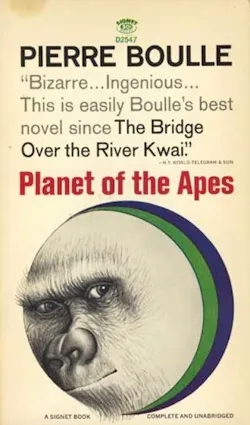
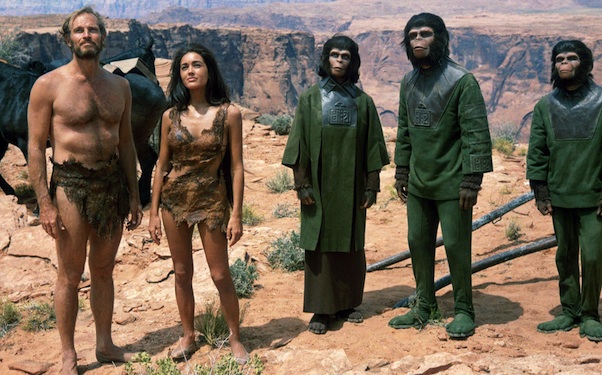
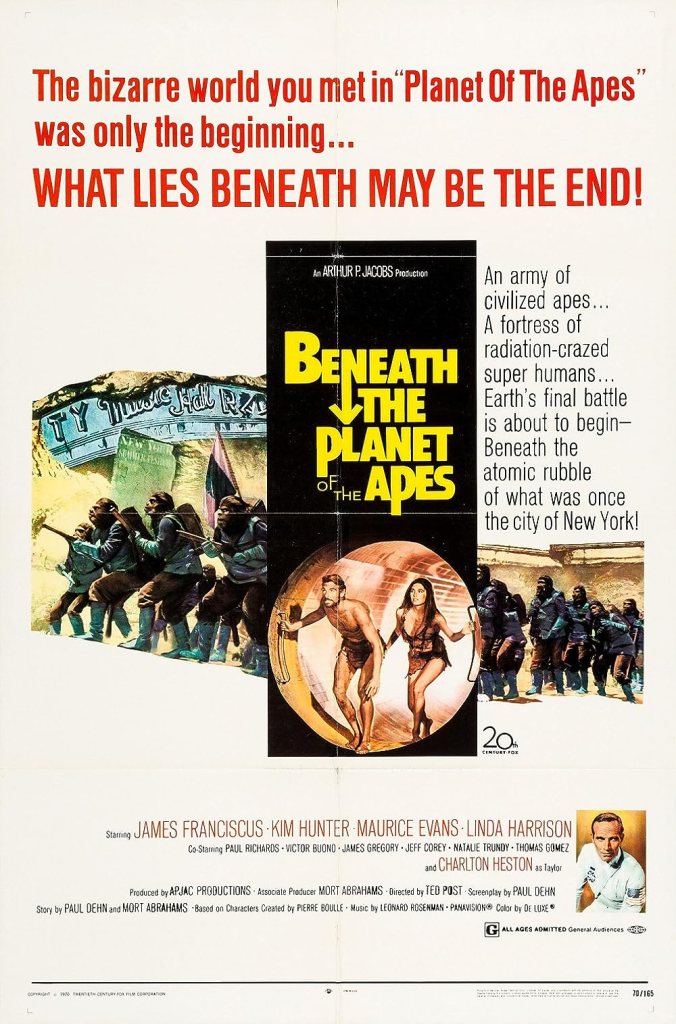
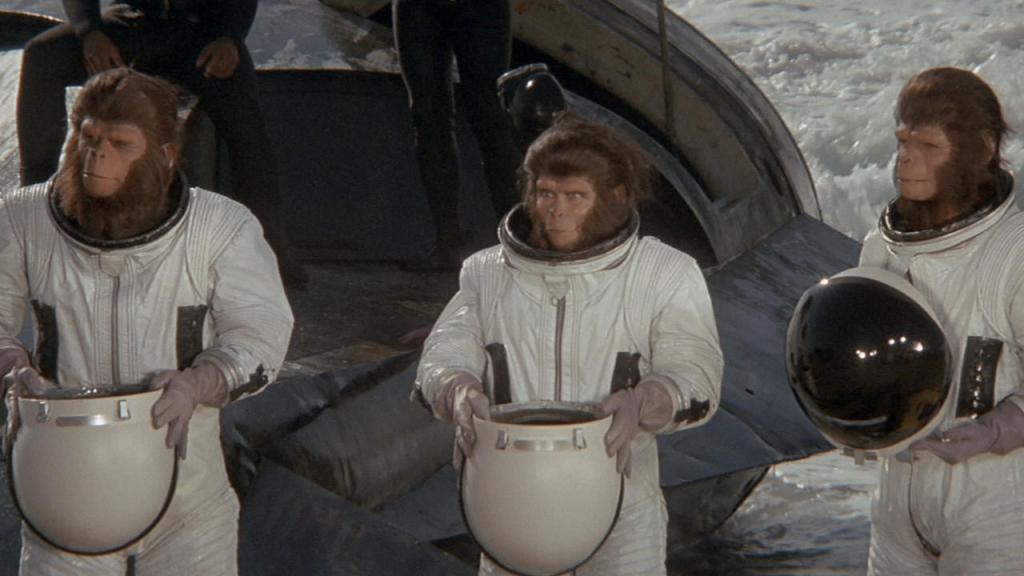
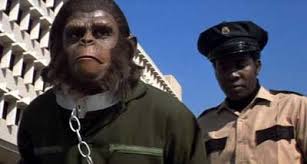
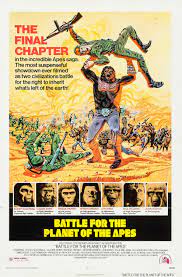
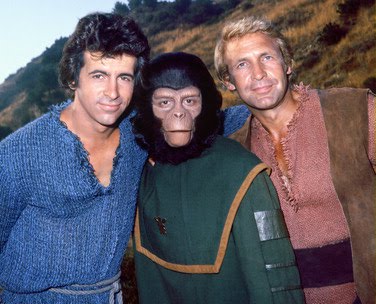
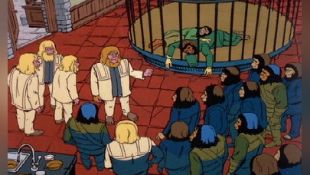
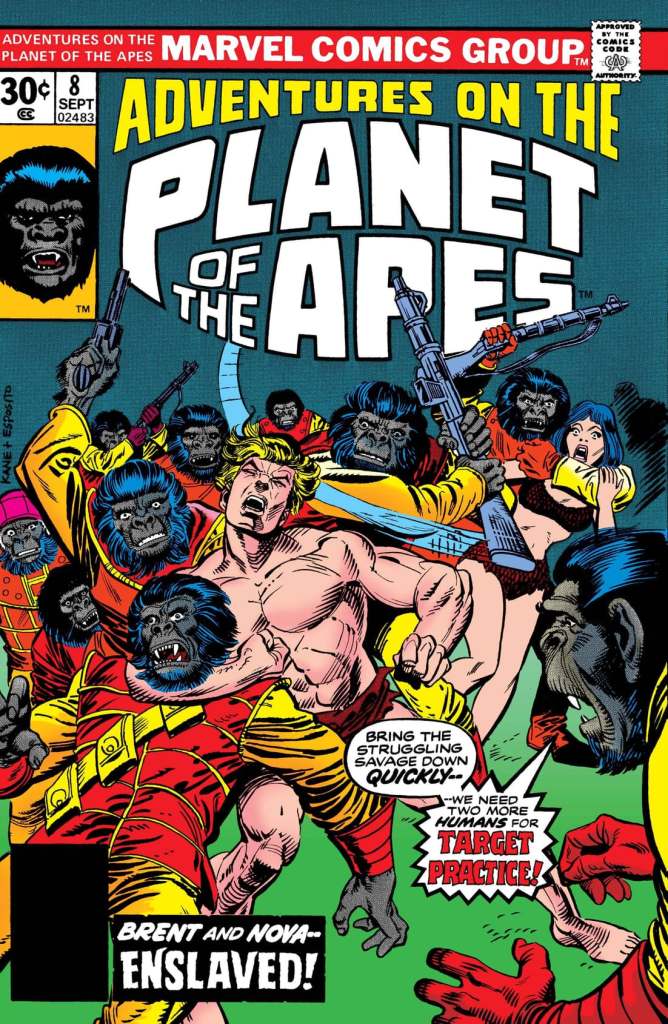
You must be logged in to post a comment.